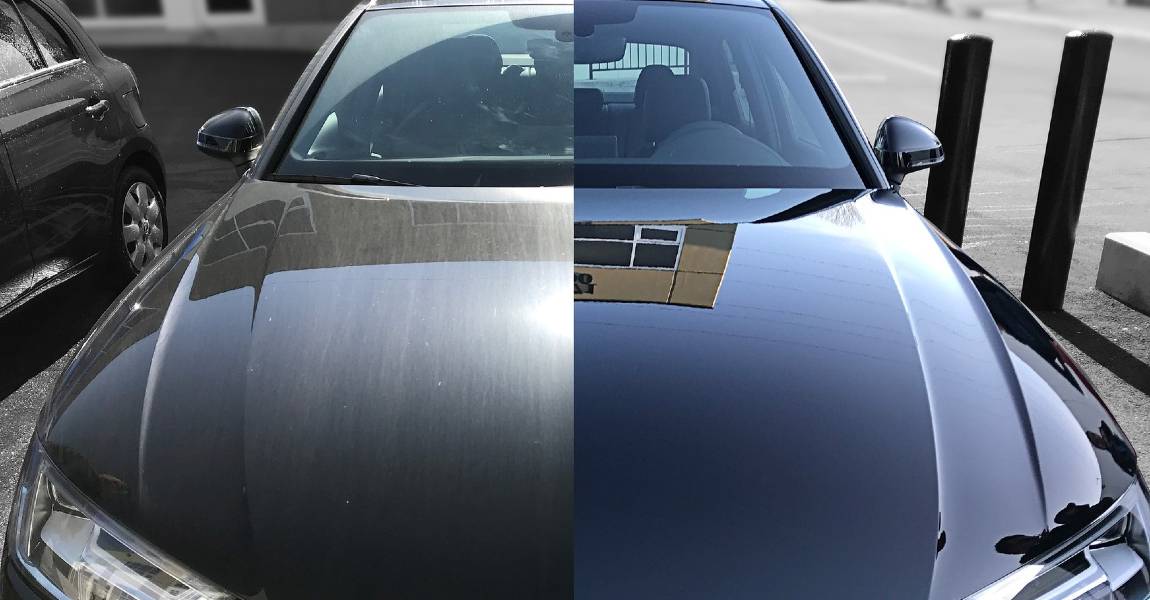Experience professional car detailing to deep clean your vehicle’s interior and exterior.
A Comprehensive Guide to the Types of Ceramic Layer on the Market
Ceramic layers have become a pivotal option across numerous markets as a result of their unique buildings and applications. From silica-based formulas recognized for their effectiveness to crossbreed choices that merge multiple advantages, the choices available can be overwhelming. Recognizing the nuances of each kind, including their certain advantages and ideal usage situations, is vital for making educated choices. As we discover the distinct attributes and applications of these coatings, the effects for efficiency and durability come to be significantly evident, questioning about which kind may finest suit your requirements.
Understanding Ceramic Coatings
Ceramic layers are advanced protective solutions that have actually acquired appeal in different industries, particularly in vehicle and aerospace applications. These finishings consist of a fluid polymer that, when healed, creates a long lasting, hydrophobic layer on the surface area of the substratum. This layer provides boosted resistance to environmental contaminants, UV radiation, and chemical direct exposure, thus extending the life and aesthetic charm of the underlying product.
The fundamental part of ceramic coatings is silica, which adds to their solidity and longevity. The application process usually involves surface area prep work, application of the layer, and treating, which can be achieved with heat or UV light. When treated, ceramic coverings display exceptional bonding residential or commercial properties, enabling them to stick strongly to a variety of surface areas, including metals, plastics, and glass.
Along with their protective features, ceramic finishes likewise provide convenience of maintenance. Their hydrophobic nature reduces the adherence of dust and grime, making cleaning simpler and less constant. Generally, the adoption of ceramic coatings represents a substantial advancement in surface protection technology, providing both functional and visual benefits throughout several markets.
Sorts Of Ceramic Coatings
Various types of ceramic layers are available, each made to fulfill certain performance demands and applications - Auto Detailing. One of the most typical kinds include:
Silica-based Coatings: These finishes primarily are composed of silicon dioxide and are understood for their resilience and chemical resistance. They are extensively used in auto and commercial applications.
Titanium Dioxide Coatings: Renowned for their photocatalytic homes, titanium dioxide finishes are frequently used in environments where self-cleaning and antifungal residential properties are desirable, such as in structure materials and auto coatings.
Zirconia Coatings: Characterized by their high-temperature stability and thermal resistance, zirconia finishes are utilized in applications such as wind turbine engines and high-performance automotive elements.
Alumina Coatings: Displaying outstanding solidity and thermal security, alumina finishings are often made use of in wear-resistant applications, consisting of reducing devices and commercial equipment. - scratch repair sarasota
Crossbreed Coatings: Integrating the residential or commercial properties of various materials, crossbreed coverings provide news enhanced performance attributes, making them suitable for one-of-a-kind and demanding applications.
Each sort of ceramic covering offers unique functions, permitting customers to choose one of the most ideal remedy based on specific environmental conditions and efficiency demands.
Advantages of Ceramic Coatings
Coatings play a vital duty in boosting the performance and durability of surfaces throughout numerous sectors. Ceramic layers, in specific, offer numerous advantages that make them progressively preferred among producers and consumers alike. Among the main benefits is their extraordinary durability. These coverings are immune to scratches, chemicals, and UV rays, making sure that the underlying surface area continues to be secured in time.
In addition to longevity, ceramic coatings give outstanding hydrophobic buildings, enabling easy cleansing and upkeep. This water-repellent nature decreases the adherence of dirt, crud, and various other impurities, my link which can lengthen the aesthetic allure and functionality of the surface area. Ceramic finishings can significantly improve thermal resistance, making them ideal for applications that sustain high temperatures.

Application Process
When using ceramic layers, a precise method is vital to accomplish ideal results. The application process normally starts with thorough surface prep work. This involves cleaning, decontaminating, and polishing the surface area to remove all contaminations, including dust, oil, and prior waxes or sealants. A clean surface area makes sure proper attachment of the coating.
As soon as the surface is prepped, the next action is to apply the ceramic finishing. This can be done using an applicator pad or a microfiber towel, making sure even coverage. It is critical to function in tiny sections to keep control and stop early healing. The finish ought to be used in thin layers, as thicker applications can result in irregular finishes.
After application, the covering requires a specific healing time, usually varying from a few hours to a full day, relying on the product. During this time around, it is essential to avoid exposure to moisture or contaminants. A gentle buffing may be necessary after curing to boost the gloss and remove any type of high areas. Complying with these actions diligently will maximize the useful site efficiency and durability of the ceramic covering, giving a durable protective layer for the surface area.
Maintenance and Long Life
To guarantee the long life and performance of a ceramic layer, normal upkeep is essential. Ceramic finishings, known for their resilience and protective high qualities, require details treatment routines to optimize their life expectancy and performance.
In enhancement to regular washing, regular assessments are crucial. Search for indicators of wear or damage, such as hydrophobic residential or commercial properties diminishing or surface blemishes. If needed, a light gloss may be used to revitalize the covering without stripping it away.
Additionally, the application of a booster spray can boost the finishing's hydrophobic effects and recover its gloss. This is especially valuable for finishes that have been in usage for an extended duration. Ultimately, by adhering to these maintenance techniques, one can substantially prolong the life of a ceramic finish, guaranteeing that it remains to provide optimal protection versus ecological aspects and keep the aesthetic appeal of the car.
Verdict
